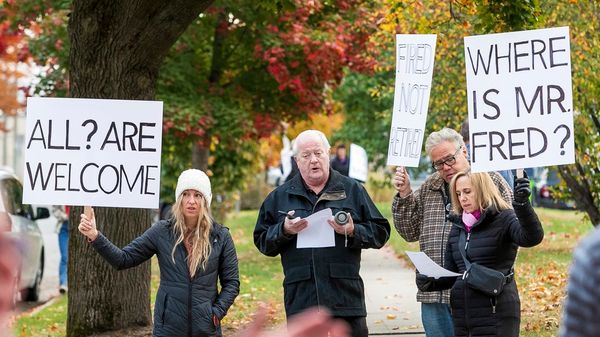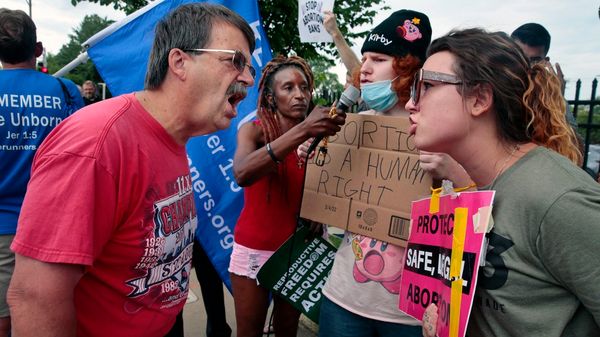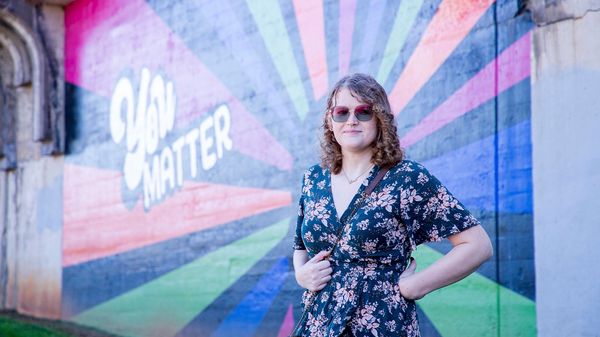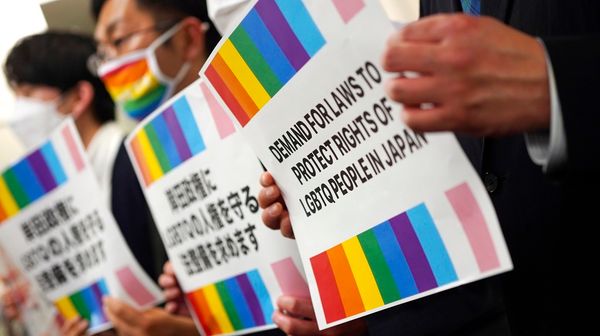
July 2, 2017
SF Homeless Project: Struggle with Tents for SF's Homeless Continues
Seth Hemmelgarn READ TIME: 5 MIN.
San Francisco officials are continuing to struggle with addressing the issue of homeless people whose only shelter are the tents lining many city sidewalks. Specific data on the size of the problem and how much change there's been is hard to find, but progress appears to be slow.
Last year, then-Supervisor Scott Wiener wrote to city agencies asking them to provide data on how many tents there were, and how many people were occupying them, among other queries.
In their April 2016 response, Human Services Agency Director Trent Rhorer and other officials said, "While we do not have a specific count for tents on our streets, we know there are approximately 3,500 people living unsheltered and there are estimated to be 100 encampments," which the city defined as "groups of more than two staying together."
Sam Dodge, deputy director of the Department of Homelessness and Supportive Housing, said in an email to the Bay Area Reporter this week that according to the city's Homeless Outreach Team "and recent survey efforts, we found nearly 600 tents in San Francisco. This is a very dynamic number with some tents being used as storage and others with two or more people. We've found an average of one person per tent."
Asked in an interview whether he thinks there are more tents or fewer than last year, Dodge said, "It's hard for me to have an objective view on it, to be honest. I spend a lot of time in encampments. ... There's definitely been a huge rise in the use of tents over the last five years, that I can say unequivocally, and not just in our community, but also in communities up and down the West Coast."
Dodge added, "I think that the goal of the city is to have no one living unsheltered," but "it could take a while" to get there.
"To the extent that someone may use a tent in the middle of the night is relatively less controversial than the idea that people are going to set up permanent camp sites or semi-permanent campsites that make accessibility difficult" for people in wheelchairs or parents pushing strollers, along with other issues, he said.
"To have people step into the street to walk around encampments ... that's a problem," said Dodge.
In their April 2016 letter to Wiener, who's now a state senator, city officials said there were "1,203 beds in the adult shelter system. In March 2016, there was an average vacancy of 59 beds or 5 percent per night."
According to data Dodge provided this week, the average vacancy rate is still 5 percent, indicating that anyone who wanted to get one of the city's shelter beds may have a hard time.
The number of adult shelter beds hasn't changed, but the city has opened two new Navigation Centers, which offer homeless people a place to bring their belongings and pets and stay with their partners. The city now has 231 navigation or temporary shelter beds, said Dodge. There are also 59 units where families can stay for three to six months, among other spaces for homeless families, he said.
But people who are living on San Francisco's streets regularly say they don't want to go into one of the city's shelters, citing fears ranging from getting robbed to bedbugs.
One of the most common areas for encampments has been the sidewalks along Division Street in the South of Market area. A long, elevated section of Highway 101 stretches over many of the tents, providing shade and shelter from the rain when it comes.
Many of the tents sit in rows, one right next to the other, but Keith Devill, 46, has placed his tent in a spot that's at least half a block from any of the others. Devill, who first came to the spot a few months ago and identifies as bisexual, said that he doesn't want to be around other people "because 99 percent are on drugs and alcohol."
City workers told him to leave the spot three to four weeks ago, but he doesn't want to go to a shelter.
"I like to be by myself," he said. " ... Tight quarters. Lots of people. Drugs. Bullshit. I don't need it."
Asked about going into a Navigation Center, Devill said, "I guess I'd be interested." He isn't quite sure how to get into one, but "I could find it if I really put my efforts into it."
Jennifer Friedenbach, executive director of San Francisco's Coalition on Homelessness, said that only "about 5 or 6 percent" of the city's homeless population are living in tent encampments.
"We don't see a huge increase in the number of people in tents, but we see them being pushed into different areas," said Friedenbach. As people get displaced from encampments, they often have no place else to go, and "they move to another location ...That has been the predominant feature of our tent encampments, just being constantly moved around."
She's surprised there aren't actually more people staying in tents.
"So many others don't have even that little modicum of shelter and level of privacy to change your clothes and just have some respite from being constantly in the public eye, which is really tiring for folks, especially women," said Friedenbach.
Report on Homeless Agency's First Year
The city's Homelessness and Supportive Housing Department started forming in June 2016 and officially launched last August. This week, the department released a report with data from last June until May 2017.
According to the report, the agency "Worked to resolve encampments at 11 sites." Staff engaged 461 people and made 329 placements in a Navigation Center or "other safe places." About 25 percent "of encampment clients found permanent housing," the report says.
In August 2016, the department launched its Encampment Resolution Team "to identify and resolve encampments based on the size, public impact, and acuity of need."
There's also now an encampment working group that meets every week, and a re-encampment prevention team that works with the San Francisco Police Department and Public Works to ensure that encampments that have been "resolved" don't re-form.
This August, the Homelessness and Supportive Housing Department will release its strategic framework, "outlining a radical transformation of the Homelessness Response System and clearly defined, obtainable goals for the next five years."
Mayor Ed Lee has proposed a $245 million budget for the Homelessness and Supportive Housing Department, a 12 percent increase over the agency's 2016-17 budget.
Dodge said that the city has several plans to address the crisis, including a 30-unit family shelter that's supposed to open in July in the South of Market area and a Navigation Center with space for about 130 people that should be open in March 2018, also planned for SOMA.







